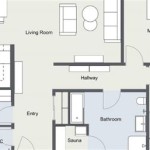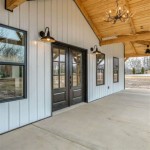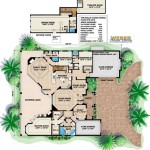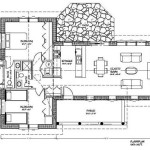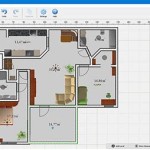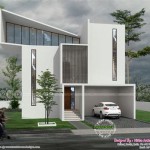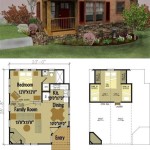Discover Your Dream Home: House Plan For 4 Bedrooms In Singapore
Singapore, a vibrant city-state renowned for its efficient urban planning and innovative architectural designs, presents unique challenges and opportunities for homeowners seeking to build or renovate their dream home. A common requirement for larger families is a four-bedroom house plan. The design and functionality of such a plan must carefully consider space constraints, regulatory guidelines, and the specific lifestyle needs of the occupants.
Developing a suitable four-bedroom house plan in Singapore involves a multi-faceted approach, encompassing architectural considerations, interior design principles, and compliance with local building codes. This article provides insights into key aspects of designing a four-bedroom house plan tailored for the Singaporean context, including optimizing space, creating functional layouts, and adhering to relevant regulations.
Optimizing Space in Singaporean Homes
Given the high land costs and limited space availability in Singapore, efficient space utilization is paramount in designing a four-bedroom house. This necessitates innovative architectural solutions that maximize usable area without compromising comfort or aesthetics. Several strategies can be employed to achieve this goal.
Firstly, vertical space optimization is crucial. Multi-story houses, or incorporating mezzanine levels within existing structures where permissible, can significantly increase the total floor area. This allows for the separation of living spaces, such as bedrooms on the upper levels and living areas on the ground floor, creating a sense of spaciousness and privacy. Careful consideration must be given to staircase design to ensure ease of access and minimal space intrusion.
Secondly, smart storage solutions are essential. Built-in wardrobes, under-stair storage, and hidden compartments can effectively declutter living spaces and maximize functionality. Multi-functional furniture, such as sofa beds and extendable dining tables, can also contribute to space optimization, particularly in smaller rooms. These solutions should be seamlessly integrated into the overall design to maintain a cohesive and aesthetically pleasing environment.
Thirdly, open-plan living concepts can create a sense of spaciousness by combining living, dining, and kitchen areas. This approach eliminates the need for dividing walls, allowing natural light to penetrate deeper into the house and creating a more social and interactive environment. However, careful planning is required to define distinct zones within the open-plan layout and to manage noise and odors effectively. Zoning can be achieved through the use of furniture arrangement, changes in flooring materials, or strategically placed screens or partitions.
Finally, the use of natural light and ventilation can significantly enhance the perceived spaciousness of a house. Large windows, skylights, and strategically placed vents can bring natural light and fresh air into the interior, making the space feel brighter and more airy. The orientation of the house should also be carefully considered to maximize natural light and minimize heat gain, contributing to energy efficiency and a more comfortable living environment.
Creating Functional and Adaptable Layouts
A well-designed four-bedroom house plan should prioritize functionality and adaptability to meet the diverse needs of a family. The layout should facilitate seamless movement, provide adequate privacy, and cater to different activities and age groups. Several key considerations are crucial in creating a functional and adaptable layout.
Firstly, the placement of bedrooms is crucial. The master bedroom should ideally be separated from the other bedrooms to provide privacy and tranquility for the parents. Children's bedrooms should be located in close proximity to each other to encourage interaction and facilitate supervision. Guest bedrooms, if included, should be placed in a location that allows for easy access without disrupting the privacy of the main living areas.
Secondly, the design of bathrooms is of paramount importance. En-suite bathrooms for the master bedroom are a common feature, providing convenience and privacy. Shared bathrooms for the other bedrooms should be designed with practicality in mind, including ample storage space, good ventilation, and durable fixtures. The number of bathrooms should be sufficient to accommodate the needs of all occupants, particularly during peak hours.
Thirdly, the incorporation of flexible spaces is essential. A multi-purpose room can serve as a home office, a playroom, or a guest room, depending on the family's needs. This room should be designed with flexibility in mind, including adequate lighting, power outlets, and storage space. Similarly, outdoor spaces such as balconies or patios can be designed to be adaptable to different activities, such as dining, gardening, or relaxation.
Fourthly, the flow of movement within the house should be carefully considered. The layout should facilitate easy access between different areas, minimizing bottlenecks and ensuring smooth circulation. Corridors should be wide enough to accommodate furniture and allow for comfortable passage. The placement of doorways and windows should be strategically planned to maximize space and minimize obstruction.
Fifthly, universal design principles can be incorporated to enhance the accessibility and adaptability of the house for people of all ages and abilities. This includes features such as wider doorways, ramps instead of steps, and grab bars in bathrooms. Incorporating these principles can ensure that the house remains functional and accessible for years to come, even as the family's needs change.
Compliance with Singaporean Building Codes and Regulations
Adhering to Singaporean building codes and regulations is a non-negotiable aspect of designing a four-bedroom house plan. These regulations are designed to ensure the safety, structural integrity, and sustainability of buildings, as well as to protect the environment and the well-being of occupants. Several key regulations must be taken into account during the design process.
Firstly, the Building Control Act and Regulations set out the requirements for structural safety, fire safety, and accessibility. These regulations specify the minimum standards for building materials, construction methods, and safety features. Compliance with these regulations is essential to obtain building permits and ensure the safety of the occupants.
Secondly, the Planning Act and Regulations govern land use and development. These regulations specify the permissible uses for different areas of Singapore, as well as the building height, density, and setback requirements. Compliance with these regulations is essential to ensure that the house plan is in accordance with the local planning guidelines.
Thirdly, the National Environment Agency (NEA) sets out regulations for environmental protection, including noise control, air quality, and waste management. These regulations specify the measures that must be taken to minimize the environmental impact of building construction and operation. Compliance with these regulations is essential to protect the environment and the health of the community.
Fourthly, the Urban Redevelopment Authority (URA) provides guidelines for sustainable development. These guidelines encourage the use of energy-efficient materials, water-saving technologies, and green building practices. Incorporating these guidelines into the house plan can contribute to a more sustainable and environmentally friendly home.
Fifthly, engaging a qualified architect or building professional who is familiar with Singaporean building codes and regulations is highly recommended. These professionals can provide guidance on the design process, ensure compliance with relevant regulations, and assist in obtaining the necessary permits and approvals. Failing to comply with these regulations can result in costly delays, fines, or even demolition of the building.
In addition to these specific regulations, it's crucial to consider factors such as floor area ratio (FAR), site coverage, and building height limitations, which are specific to the land zoning and type of development. These factors directly influence the size and form of the house, and understanding them is vital for creating a feasible and legally compliant design.
Furthermore, homeowners should be aware of potential restrictions imposed by condominium management corporations or homeowners' associations, if applicable. These restrictions can regulate aspects such as exterior design, renovation timelines, and noise levels. Failure to comply with these internal regulations could lead to disputes and additional expenses.
Designing a four-bedroom house plan in Singapore requires a balanced approach that considers space optimization, functional layouts, and strict adherence to local building codes and regulations. By carefully considering these factors, homeowners can create a dream home that meets their specific needs and preferences while ensuring safety, sustainability, and compliance with the law. Engaging experienced professionals and staying informed about the latest regulations are essential steps in achieving this goal, resulting in a comfortable and legally sound living space for the entire family.

Hdb Mnh How To Read Your Floor Plan In 10 Seconds

Jalan Tari Seriimpi Terraced House For At S 4 288 000 Propertyguru Singapore

Interior Design Inspiration For Hdb 4 Room Flats Creating Stylish Spaces In Singapore Yang S

Space Maximization Discovering The Largest 4 Room Flat In Singapore For Your Living Needs 9creation

Costa Grove Interior Design Ideas For Your New Bto Home

House Floor Plans 50 400 Sqm Designed By Me The World Of Teoalida
Everything You Need To Know About Home Plans Homeshelf News

Exploring 10 Delightful Single Story House Plans For Your Dream Home Homify

4 Bedroom Traditional House Plans 2115 Sf 56 X46 Digital Blueprint Etsy

4 Bedroom 2 Bathroom Modern House Architectural Plans 287 Sq Ft Etsy
Related Posts

